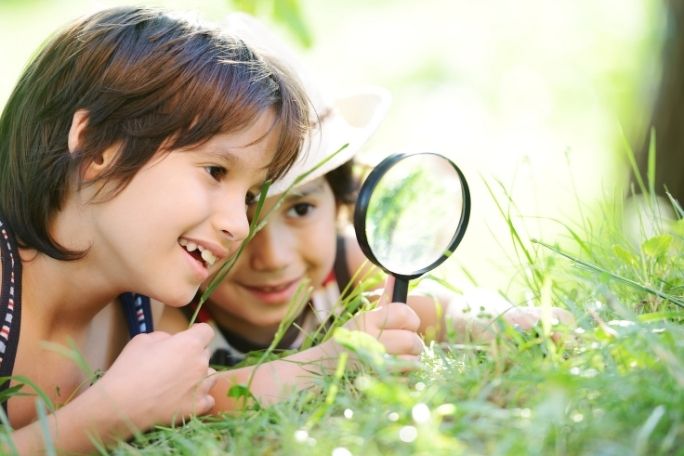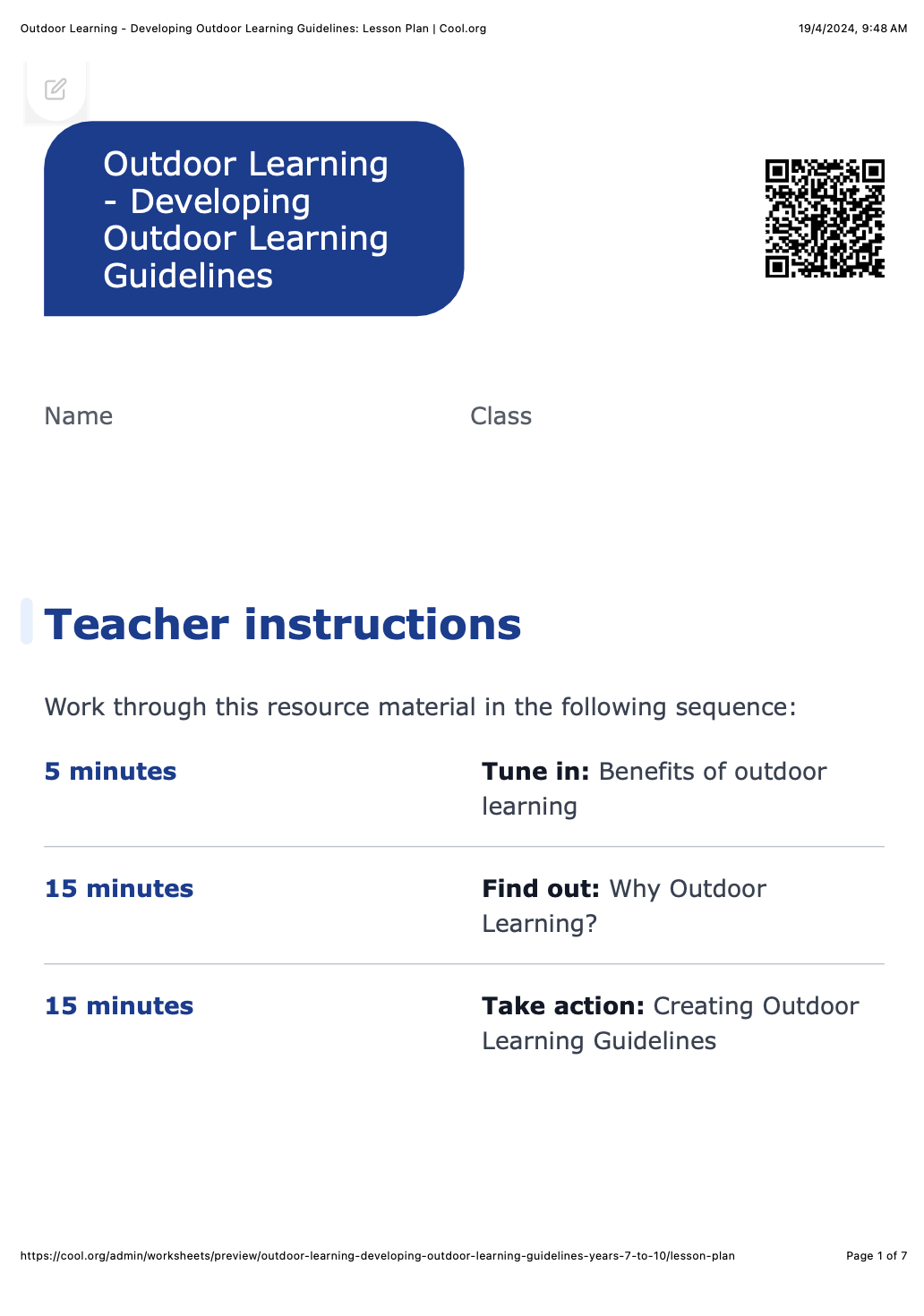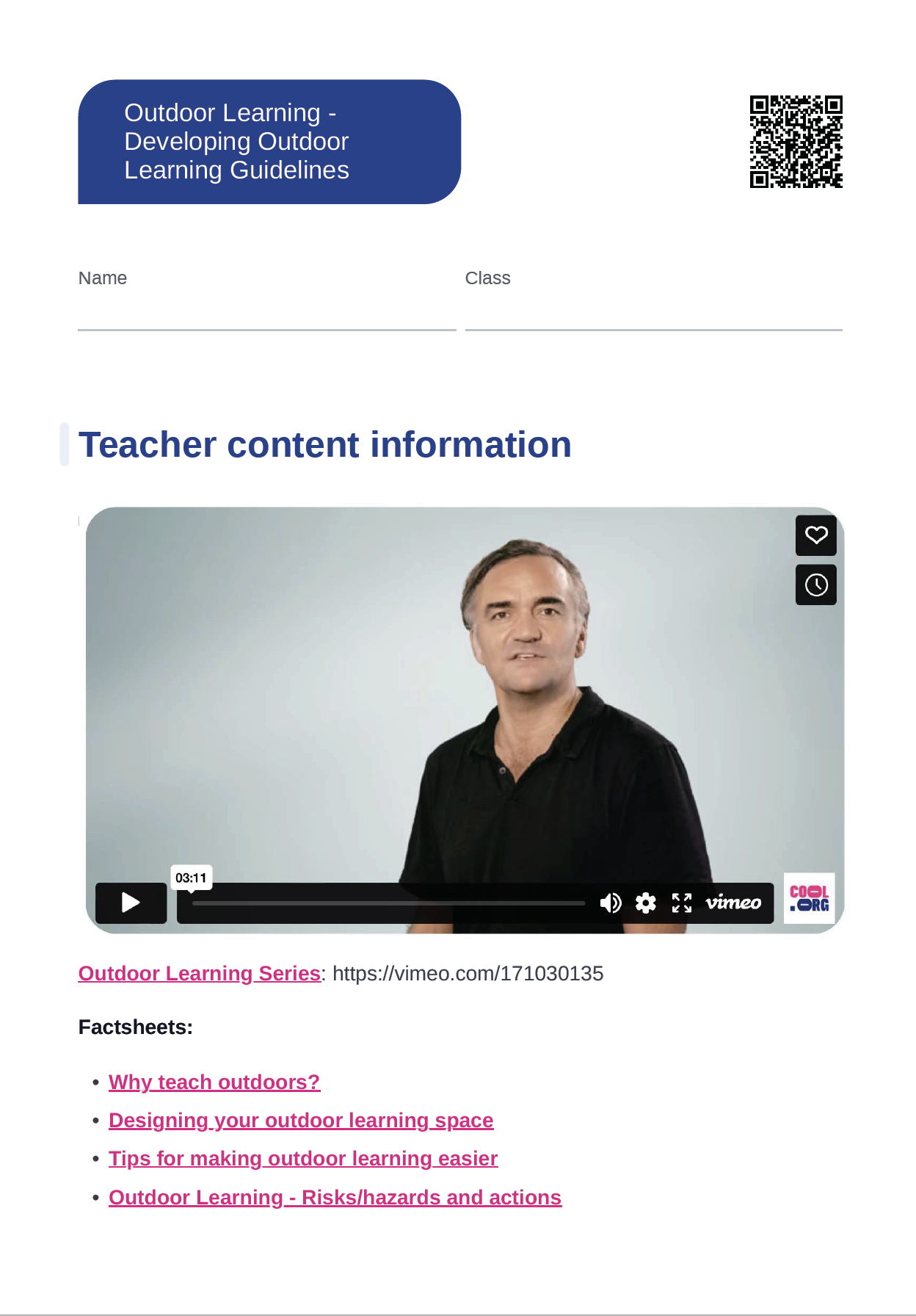Lesson summary
Outdoor learning has a wide range of benefits, but can be tricky to navigate for teachers. This lesson is designed to support teachers to manage student expectations and behaviour when taking part in outdoor learning. Students will work collaboratively to build a shared understanding and create a set of guidelines for participating in outdoor learning activities.
Learning intentions:
Students will...
- create a set of guidelines for working and learning outdoors safely.
Success criteria:
Students can...
- understand the benefits of outdoor learning
- discuss ideas
- agree on a list of guidelines.
Lesson guides and printables
Lesson details
Curriculum mapping
General capabilities: Personal and Social Capability.
Cross-curriculum priority: Sustainability.
Resources required
- A4 paper
- Art Supplies - coloured pens and pencils
- Device capable of presenting a website to the class
- Student Worksheet - one copy per student
Skills
This lesson is designed to build students’ competencies in the following skills:
- communication
- collaboration
- social skills
Additional info
Level of teacher scaffolding: Medium - oversee activity and facilitate discussion.
This lesson is designed to be taught outside. It contains all the tools required for students to reap the benefits of being outdoors while learning the outcomes of the Australian Curriculum. By spending time outdoors and connecting to nature, students are more likely to care for and conserve nature as adults.
This is an original Cool+ lesson.
Related Professional Learning
Introduction to Secondary STEM
Quick summary: This course will help you understand the essential foundations of STEM teaching and learning and provide opportunities to help build knowledge, skills and confidence to take on STEM in your classroom.



Welcome back!
Don't have an account yet?
Log in with:
By signing up to Cool.org you consent and agree to Cool's privacy policy to
store, manage and process your personal information. To read more, please see
our privacy policy here(Opens in new tab).
Create your free Cool.org account.
Many of our resources are free, with an option to upgrade to Cool+ for premium content.
Already have an account?
Sign up with:
By signing up to Cool.org you consent and agree to Cool's privacy policy to
store, manage and process your personal information. To read more, please see
our privacy policy here(Opens in new tab).